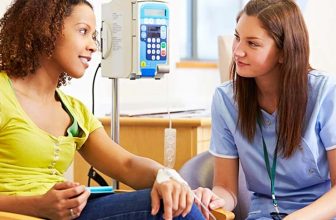
Every 11 minutes, an American life is lost to an opioid overdose. This staggering statistic underscores the urgency of the opioid epidemic that is ravaging communities nationwide.
Amidst this crisis, a beacon of hope emerges in the form of Medication-Assisted Treatment (MAT) – a comprehensive approach that combines medication, counseling, and behavioral therapies to combat addiction and empower individuals on their journey to recovery.
The Paradigm Shift in Addiction Treatment
For decades, traditional abstinence-only models dominated the approach to treating substance use disorders. However, a paradigm shift is underway, with integrated treatment approaches gaining traction and support from healthcare professionals and drug addiction recovery communities alike. At the forefront of this evolution is Medication-Assisted Treatment (MAT), which offers a comprehensive approach to overcoming drug addiction by combining medication with counseling and behavioral therapies.
This paradigm shift acknowledges the complex interplay of biological, psychological, and social factors contributing to addiction. By addressing these multifaceted aspects, MAT offers a holistic and individualized treatment approach tailored to each person’s unique needs and circumstances.
The emergence of Medication-Assisted Treatment (MAT) as a leading addiction treatment modality has revolutionized the way we approach substance use disorders. By recognizing the intricate interplay of biological, psychological, and social factors in drug addiction, MAT offers a comprehensive and personalized approach to recovery.
Understanding Medication-Assisted Treatment
Medication-Assisted Treatment is a multifaceted approach that recognizes the complex interplay between biological, psychological, and social factors in addiction. It combines FDA-approved medications with counseling and behavioral therapies to address the physical and psychological aspects of drug addiction simultaneously.
Key Medications Used in MAT
Methadone: This long-acting opioid agonist reduces cravings and withdrawal symptoms, helping individuals to focus on their recovery without the constant battle against physical dependence. Methadone has been widely used in MAT programs and has been shown to be effective in reducing opioid use and improving treatment retention rates.
Buprenorphine: As a partial opioid agonist, buprenorphine minimizes the risk of physical dependence while alleviating withdrawal symptoms and cravings. Its unique pharmacological properties make it an attractive option for individuals seeking to transition from illicit opioid use to a safer, controlled treatment environment.
Naltrexone: This opioid antagonist blocks the euphoric effects of opioids, reducing the reinforcing properties of drug use and supporting long-term abstinence. Naltrexone is often used in the later stages of recovery, helping to prevent relapse and maintain sobriety.
While these medications play a crucial role, MAT is more than just pharmacological intervention. It emphasizes the importance of a comprehensive treatment plan that includes psychological support and counseling to address the root causes of drug addiction and develop coping mechanisms for long-term recovery.
The Efficacy of MAT in Opioid Addiction Recovery
The success of MAT in combating opioid addiction is well-documented, with numerous studies showcasing its effectiveness in reducing opioid misuse, overdose deaths, and criminal activity associated with drug use.
A recent study found that individuals receiving MAT had a 59% lower risk of overdose death compared to those not receiving MAT. Additionally, research has consistently demonstrated that individuals engaged in MAT programs have higher rates of treatment retention and lower rates of illicit opioid use compared to those receiving behavioral therapies alone.
Beyond statistics, personal anecdotes and case studies underscore the transformative impact of MAT on individuals’ recovery journeys. From regaining control over their lives to mending relationships and pursuing professional goals, MAT has empowered countless individuals to reclaim their futures. Next…Individuals with MAT for Opioid Addiction.
Combating Stigma and Misconceptions
Despite its proven efficacy, MAT continues to face stigma and misconceptions, often rooted in the belief that it merely substitutes one addiction for another. However, this perception fails to recognize the medical supervision and goal-oriented nature of MAT, which aims to reduce dependence and support long-term recovery.
One of the most common misconceptions is the belief that MAT simply replaces one drug with another. However, the medications used in MAT are carefully monitored and prescribed by healthcare professionals to manage withdrawal symptoms and cravings, reducing the risk of relapse and supporting long-term recovery. Unlike illicit drug use, MAT is a medically supervised treatment approach aimed at reducing dependence and empowering individuals to regain control over their lives.
Addressing these misconceptions requires a concerted effort from healthcare providers, policymakers, and communities to educate the public and promote a better understanding of MAT’s role in addiction recovery. Through awareness campaigns, educational initiatives, and open dialogues, we can dispel the myths surrounding MAT and foster a more compassionate and supportive environment for those seeking treatment.
Regulatory and Access Challenges
While progress has been made in recognizing the value of MAT, significant regulatory hurdles and limitations continue to impede access. Strict prescription regulations, limited insurance coverage, and a shortage of qualified healthcare providers trained in MAT administration all contribute to the barriers faced by individuals seeking this treatment option.
One of the primary challenges lies in the strict regulations surrounding the prescription of medications used in MAT, such as buprenorphine and methadone. These regulations, while intended to prevent misuse and diversion, can inadvertently create obstacles for individuals seeking treatment. Healthcare providers must undergo specialized training and obtain specific license to prescribe these medications, limiting the availability of MAT services in some areas.
Furthermore, limited insurance coverage for MAT can pose a significant financial burden for individuals seeking treatment. Many insurance plans may not cover the full cost of medications, counseling, and behavioral therapies, making it difficult for those with limited resources to access comprehensive care.
Efforts are underway to expand MAT availability, including changes in prescription regulations, increased insurance coverage, and initiatives to train more healthcare professionals in administering these medications. However, more work is needed to ensure equitable access to this life-saving treatment.
The Role of MAT in Holistic Recovery Programs
Effective drug addiction recovery often requires a holistic approach that addresses the multifaceted nature of the condition. MAT plays a crucial role within this broader framework, complementing support groups, lifestyle changes, and mental health therapies to provide a comprehensive recovery experience.
By addressing the physiological aspects of drug addiction through medication, individuals can better engage with counseling and behavioral therapies that target the psychological and social factors contributing to their substance use disorder. This integrated approach allows individuals to develop coping mechanisms, build a supportive network, and make positive lifestyle changes that promote long-term recovery.
One of the key advantages of MAT is its ability to be personalized, with medication plans tailored to individual needs and recovery goals. This customization allows for a flexible and responsive treatment approach, maximizing the chances of long-term success.
Future Directions in Medication-Assisted Treatment
The field of MAT is continuously evolving, with ongoing research and advancements paving the way for new medications and therapies to enhance recovery outcomes further. Potential developments include:
Novel medications: Researchers are exploring new medications that target different neurotransmitter systems implicated in addiction, offering alternative treatment options for individuals who do not respond well to current medications. For example, ongoing studies are investigating the use of medications originally developed for other conditions, such as depression or diabetes, in the treatment of substance use disorders.
Improved delivery methods: Innovative delivery methods, such as long-acting injectable formulations or implants, could improve medication adherence and reduce the risk of misuse or diversion. These advancements could potentially address challenges related to daily medication compliance and ensure consistent therapeutic levels of the medication in the body.
Personalized treatment plans: With advances in pharmacogenomics and biomarker research, it may become possible to tailor treatment plans more precisely to an individual’s genetic makeup and biological factors, optimizing the effectiveness of MAT. By identifying specific genetic markers or biological indicators, healthcare providers can better predict an individual’s response to different medications and adjust treatment accordingly.
As these advancements continue to shape the future of MAT, it is crucial to stay informed and embrace evidence-based practices that prioritize the well-being and recovery of individuals struggling with addiction. Ongoing research, collaboration among healthcare professionals, and a commitment to innovation will be essential in unlocking the full potential of MAT and saving more lives.
Frequently Asked Questions
Is Medication-Assisted Treatment just substituting one addiction for another?
No, MAT is not substituting one addiction for another. The medications used in MAT are carefully monitored and prescribed by healthcare professionals to manage withdrawal symptoms and cravings, reducing the risk of relapse and supporting long-term recovery. Unlike illicit drug use, MAT is a medically supervised treatment approach aimed at reducing dependence and empowering individuals to regain control over their lives.
Can I pursue Medication-Assisted Treatment while maintaining my job and family life?
Yes, MAT is designed to integrate into daily life, allowing individuals to continue their personal and professional responsibilities while receiving treatment. The medications used in MAT are taken orally or through long-acting injections, minimizing disruptions to daily routines. Additionally, the counseling and behavioral therapy components of MAT can often be scheduled around work and family commitments.
How long do I need to be on Medication-Assisted Treatment?
The duration of MAT varies from individual to individual and is determined by several factors, including the severity of addiction, co-occurring mental health conditions, and progress in recovery. Some individuals may require longer-term maintenance on certain medications, while others may transition to alternative therapies or taper off medications over time. Healthcare providers closely monitor each patient’s progress and adjust treatment plans accordingly, ensuring a personalized approach to achieving long-term recovery.
Can Medication-Assisted Treatment be used for substance use disorders other than opioid addiction?
While MAT has been primarily focused on treating opioid use disorders, there is ongoing research and experimentation with using medications in combination with counseling and behavioral therapies for other substance use disorders, such as alcohol and stimulant addictions. However, the efficacy and safety of these approaches are still being evaluated, and they may not be as widely available or approved as MAT for opioid addiction.
Are the medications used in MAT safe during pregnancy?
The safety of MAT medications during pregnancy is a crucial consideration, as both untreated opioid use disorder and abrupt discontinuation of opioid use can pose risks to the mother and the developing fetus. According to the Substance Abuse and Mental Health Services Administration (SAMHSA), methadone and buprenorphine are considered safe and effective options for pregnant women with opioid use disorders.
However, it is essential to consult with healthcare providers and addiction specialists to develop a personalized treatment plan that balances the risks and benefits for both the mother and the baby.
Can I participate in support groups or recovery programs while undergoing Medication-Assisted Treatment?
Yes, MAT is often complemented by participation in support groups and recovery programs. In fact, many experts recommend combining MAT with counseling, behavioral therapies, and peer support to address the multifaceted aspects of drug addiction recovery. Support groups and recovery programs can provide valuable emotional support, coping strategies, and a sense of community, which can aid in long-term recovery.
What happens if I relapse while on Medication-Assisted Treatment?
Relapse is a common occurrence in the recovery process and does not necessarily mean the end of treatment. If a relapse occurs while on MAT, it is essential to communicate openly with your healthcare provider and support team. They may adjust the medication dosage or treatment plan to better address the underlying triggers or challenges that led to the relapse. Additionally, counseling and behavioral therapies can help identify and address the root causes of the relapse, enabling individuals to get back on track with their recovery journey.
Can I take other medications while undergoing Medication-Assisted Treatment?
It is crucial to disclose all medications, including over-the-counter drugs and supplements, to your healthcare provider before starting MAT. Some medications may interact with the medications used in MAT, potentially increasing the risk of side effects or reducing their effectiveness. Your healthcare provider will evaluate any potential interactions and make necessary adjustments to ensure the safety and efficacy of your treatment plan.
What are the potential side effects of the medications used in Medication-Assisted Treatment?
Like any medication, the drugs used in MAT may have potential side effects. Common side effects of methadone and buprenorphine can include nausea, constipation, sweating, and drowsiness, particularly in the early stages of treatment. Naltrexone may cause nausea, headaches, and dizziness. It is essential to discuss any side effects with your healthcare provider, as they may be able to adjust dosages or provide additional support to manage these effects.
How can I find a qualified healthcare provider or treatment program offering Medication-Assisted Treatment?
Many resources are available to help locate qualified healthcare providers and treatment programs offering MAT in your area. The Substance Abuse and Mental Health Services Administration (SAMHSA) provides a treatment locator on their website, allowing you to search for MAT providers by location. Additionally, you can consult with your primary care physician, local hospitals, or addiction treatment centers for recommendations on reputable MAT programs in your community.
Conclusion
Medication-Assisted Treatment represents a pivotal shift in combating the opioid crisis, offering a comprehensive approach that integrates medication with counseling and behavioral therapies. By addressing the multifaceted aspects of addiction, MAT provides personalized treatment plans tailored to individual needs. Despite its proven efficacy, challenges remain in combating stigma, navigating regulations, and ensuring equitable access.
However, with ongoing research, increased awareness, and a commitment to evidence-based practices, MAT stands as a beacon of hope, empowering individuals to reclaim their lives and paving the way for a future where opioid addiction is a treatable condition. By embracing innovation and prioritizing the well-being of those in recovery, we can unlock the full potential of this life-saving treatment approach.









